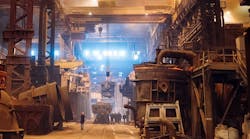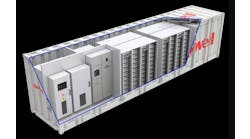A new report shows that 92% of industrial businesses in the U.S. have been affected by resource scarcity, which has led to increasing costs, supply chain disruptions and production slowdowns. In response, most businesses surveyed in the report support circularity regulations, and 67% say they’ll invest more over the next three years despite the lack of a standardized approach and slow adoption of key practices.
The global survey, "Circularity: no time to waste," from ABB Motion and conducted by Sapio Research in October 2023, shows industry connects improving circularity with energy efficiency, and that energy is among of the biggest waste sources.
Raw materials (39%) are seen as the scarcest resource, followed by labor (35%), and electronic components (33%). Resource scarcity has led to increased costs for 39% of businesses, as well as supply chain disruptions for 39%, and slowdowns in production capacity for 29%. Despite energy being an increasingly scarce resource, more than 40% reported it’s their biggest source of waste.
The global survey gathered responses from 3,304 industrial decision-makers across 12 countries, including 400 respondents in the U.S. Respondents represented a range of industries, such as energy, chemicals, oil and gas, and utilities.
While there’s optimism about investing in circularity, the survey identified obstacles to immediate progress. For example, no single definition of "circularity" was accepted by a majority of the respondents. Also, only 14% saw circularity as a company-wide responsibility, but this group experienced the highest level of improvements across key circularity metrics, such as energy consumption, use of recycled materials and carbon emissions.
The survey also revealed limited adoption of important circular practices in the U.S., including partnering with waste management companies (41%), incorporating energy-efficient technologies (37%), and promoting circular principles in the supply chain (36%). Meanwhile, 81% are using recycled materials in their products to some extent.
Investing in circularity has already led to measurable benefits, including waste reduction (44%) and energy efficiency improvements (49%). Though some businesses express concern about upfront investment required, many anticipate long-term improvements in process efficiency and cost control.
Most respondents (84%) agree a circular economy encourages innovation and drives competitiveness. They also support increased regulation and reporting requirements (80%), and want more government support for adopting circular business practices (82%).
The full report is available here.
Fossil-free steel
Another report ABB released recently covers the journey to fossil-free steel, and examines decarbonization challenges including cost, complexity in transitioning to lower-carbon technologies, and access to hydrogen, clean electricity, and fossil-free carbon.
Current steel production is carbon- and energy-intensive, and is classified as one of the six “hard to abate” sectors. Globally, the steel industry is responsible for an estimated 8% of the world’s energy demand, and generates 7-9% of CO2 emissions, mostly from burning fossil fuels.
To meet U.N. Paris Agreement criteria on climate change, and limit global temperature increase to less than 1.5 °C compared with pre-industrial levels, the steel industry must achieve net-zero emissions by 2050. This will require radical transformation, especially as global steel demand is projected to increase 30% by the same date.
The report spotlights fossil-free steel innovation in five steel-producing markets, and presents actions that steel producers can make to reduce carbon in the short and medium term, as well as steps to take with industry suppliers and partners to work together towards a fossil-free steel future.
The full report is located here.




